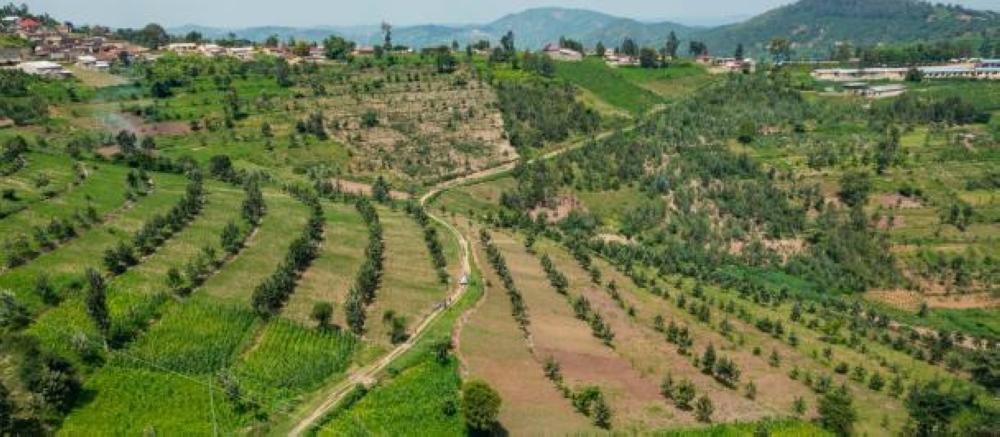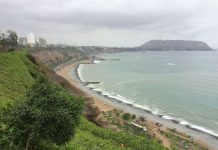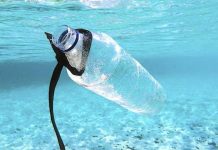Africa-Press – Rwanda. Rwanda’s climate resilience and ecosystem restoration efforts in Southern Province are expected to be expanded thanks to an $18 million (about Rwf25 billion) grant from the Global Environment Facility (GEF).
The grant is meant for a new project to scale up activities under the Green Amayaga project, according to Rwanda Environment Management Authority (REMA). The Green Amayaga project is a six-year initiative, launched in October 2020, aiming at promoting biodiversity, foster ecosystem services, increase agricultural productivity and reduce the vulnerability of people and ecosystems to the adverse effects of climate change.
The funding will support ecosystem restoration and community resilience building in six districts – Kamonyi, Muhanga, Nyanza, Ruhango, Huye, and Gisagara, REMA indicated in a statement, on Thursday, July 10.
The newly endorsed project builds on the success of the ongoing Green Amayaga project. It aims to strengthen nature-based solutions, promote integrated natural resource management, and enhance livelihoods through ecosystem-based adaptation, REMA stated.
This latest endorsement comes just days after GEF approved another $9 million grant to support restoration of Nyungwe–Ruhango Corridor, bringing total recent GEF support to Rwanda to $27 million.
The Government of Rwanda has mobilised the resources to extend the impact of the Green Amayaga project across all districts of Southern Province. To date, the project has been operating in selected areas of the province’s four districts; Kamonyi, Nyanza, Ruhango, and Gisagara, where it has made contribution to the restoration of degraded ecosystems and enhancement of community resilience to climate change.
“Rwanda is committed to restoring its environment and strengthening the resilience of its people through inclusive, science-based, and locally driven solutions,” said REMA Director General Juliet Kabera.
“Thanks to the unwavering support from the GEF, we can now scale up Green Amayaga across the entire Southern Province. This marks a critical step forward in our national efforts to build a climate-resilient, green economy.”
The programme’s impact so far
The Green Amayaga initiative has delivered impactful results in its current areas of implementation, according to REMA.
These include restored landscapes with planting more than 929 hectares of woodlots and the rehabilitation of the buffer zone of the Kibirizi–Muyira natural forest in Nyanza District, as well as agroforestry and erosion control with more than 243,000 fruit trees planted, and erosion control measures have been implemented on 13,886 hectares using agroforestry trees, terracing, and reeds.
Also, 93 kilometres of riverbanks were protected and tree planting along 763 hectares of roadside was done to prevent soil erosion and improve road safety.
Other forms of related support were in cleaner cooking solutions whereby 21,000 families received improved cookstoves helping reduce deforestation and combat indoor air pollution, as well as livelihood improvement with 2,534 vulnerable households receiving livestock such as cows, goats, and pigs, hence contributing to food security and income generation.
Scaling up these efforts will ensure that more communities benefit from improved ecosystems, increased climate resilience, and green economic opportunities, REMA observed.
The project is aligned with Rwanda’s National Strategy for Transformation, Vision 2050, and the country’s updated Nationally Determined Contribution (NDC), contributing directly to its climate action and sustainable development goals.
Rwanda launched the landscape project to restore the natural forests in Rwanda’s Southern Province and benefit 1.3 million Rwandans, on October 23, 2020.
At its launch, it was a $32.7 million initiative – supported by GEF and the United Nations Development Programme (UNDP) and implemented by REMA in partnership with Rwanda Forestry Authority (RFA) and the districts of Kamonyi, Ruhango, Nyanza and Gisagara.
The project was meant to advance the restoration of degraded forests in the area, the landscape of which covers more than 550 hectares, or 0.14 per cent of Rwanda’s total national natural forests and 10 per cent of the planted forest.
Amayaga region hosts the 354-hectare natural forest of Kibirizi-Muyira as well as the Busaga forest reserves.
For More News And Analysis About Rwanda Follow Africa-Press






